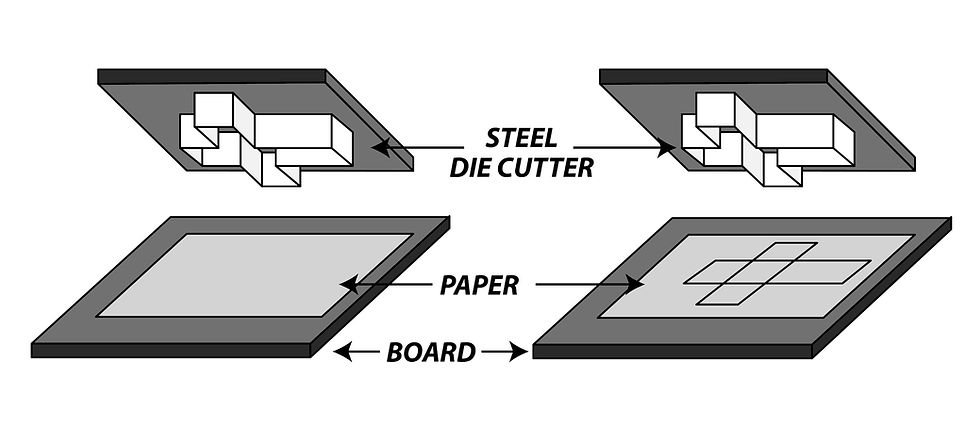Embarking on a journey as a startup or a new business owner in the realm of packaging demands attention to detail and an understanding of every facet that contributes to brand success. One such critical aspect often overlooked is die-cutting. In this guide, we'll explore the significance of die-cutting and its impact on packaging aesthetics, functionality, and overall brand positioning, shedding light on why it's worth the investment, even if it may seem costly initially.
The Essence of Die-Cutting:
Die-cutting stands as a specialized technique employed within the packaging industry to precisely shape materials like paperboard, cardboard, or corrugated board into bespoke designs. By utilizing custom-made dies, intricate shapes, patterns, and structures are achieved, ensuring packaging uniqueness and product differentiation.
Elevating Brand Identity:
Die-cutting serves as a canvas for brand expression, enabling startups to craft packaging that embodies their identity and resonates with their audience.
From captivating window cutouts that offer a peek into the product to intricate designs that exude luxury, die-cutting facilitates the translation of brand values into tangible packaging elements.
Navigating Market Competition:
In a landscape teeming with competitors vying for consumer attention, innovative packaging solutions are instrumental in carving a niche. Custom die-cut shapes and designs serve as a beacon amid the clutter, enabling products to stand out on shelves and leave a lasting impression on consumers.
Balancing Aesthetics and Functionality:
Beyond aesthetics, die-cutting enhances the functionality and practicality of packaging, augmenting the overall user experience. Whether it's facilitating easy product access, enhancing shelf visibility, or incorporating interactive elements, die-cutting marries form with function seamlessly.
Investing for Long-Term Value:
While the upfront cost of die-cutting may appear daunting, it's essential to view it as an investment in brand equity and long-term sustainability. Efficient die-cutting processes coupled with superior materials translate into packaging solutions that not only captivate consumers but also withstand the test of time, offering a compelling return on investment.
Die-cutting emerges not merely as a design technique but as a strategic tool for startups and new businesses seeking to make an indelible mark in the packaging landscape. By embracing die-cutting and collaborating with industry experts like Rigid Box Sivakasi, startups can unlock a world of creative possibilities, fortifying their brand presence, and positioning themselves for success in an increasingly competitive market. Though the cost may seem significant initially, the value derived from distinctive packaging solutions crafted through die-cutting outweighs the investment, paving the path for brand longevity and consumer loyalty.

Comentários